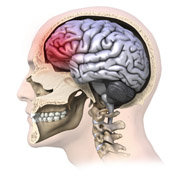Research and Innovation, UNL Office of

Center for Brain, Biology, and Behavior: Faculty Publications
ORCID IDs
https://orcid.org/0000-0001-9740-6354 Arthur Maerlender
Document Type
Article
Date of this Version
2020
Citation
Journal of the International Neuropsychological Society (2021), 27, 113–123
doi:10.1017/S1355617720000685
Abstract
Objectives: Head impact exposure (HIE) in youth football is a public health concern. The objective of this study was to determine if one season of HIE in youth football was related to cognitive changes.
Method: Over 200 participants (ages 9–13) wore instrumented helmets for practices and games to measure the amount of HIE sustained over one season. Pre- and post-season neuropsychological tests were completed. Test score changes were calculated adjusting for practice effects and regression to the mean and used as the dependent variables. Regression models were calculated with HIE variables predicting neuropsychological test score changes.
Results: For the full sample, a small effect was found with season average rotational values predicting changes in list-learning such that HIE was related to negative score change: standardized beta ( β) = -.147, t(205) = -2.12, and p = .035. When analyzed by age clusters (9–10, 11–13) and adding participant weight to models, the R2 values increased. Splitting groups by weight (median split), found heavier members of the 9–10 cohort with significantly greater change than lighter members. Additionaly, significantly more participants had clinically meaningful negative changes: X2 = 10.343, p = .001.
Conclusion: These findings suggest that in the 9–10 age cluster, the average seasonal level of HIE had inverse, negative relationships with cognitive change over one season that was not found in the older group. The mediation effects of age and weight have not been explored previously and appear to contribute to the effects of HIE on cognition in youth football players.
Included in
Behavior and Behavior Mechanisms Commons, Nervous System Commons, Other Analytical, Diagnostic and Therapeutic Techniques and Equipment Commons, Other Neuroscience and Neurobiology Commons, Other Psychiatry and Psychology Commons, Rehabilitation and Therapy Commons, Sports Sciences Commons


Comments
Copyright © INS. Published by Cambridge University Press, 2020. Used by permission.